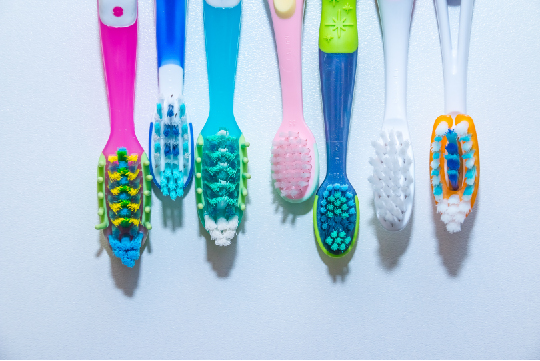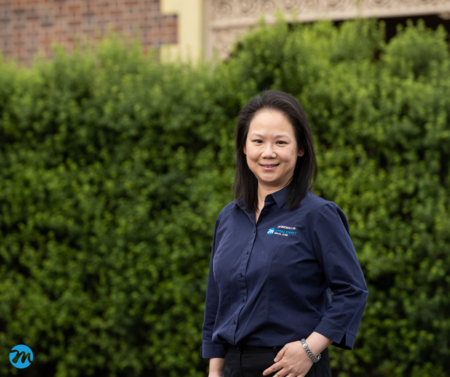Get The Most Out Of Brushing Your Teeth

What are the biggest brushing technique mistakes people make?
Rinsing: It all begins with their rinsing off all the good stuff. Toothpaste isn’t just about making bubbles and giving you minty fresh breath. The fluoride in toothpaste is especially important for re-hardening the surface of the enamel, making it more resistant to decay. It’s now recommended to rinse off after brushing – this is to enable the fluoride to stay on the teeth and do its job after we have walked away from the sink.
I feel a bit odd about this, as there could still be some food scraps that I have floating around in my mouth after brushing. My solution (or compromise) is to limit myself to only a single small slurp of water, using that to expel the food and soapy agent very quickly from my mouth. Just one small mouthful – that’s it.
The funny thing about kids is that if you give them a cup to rinse with, and they’ll fill that cup to the brim, then rinse their mouth until the very last drop of water is used up. Doing this, they’ll end up diluting and washing away all that precious fluoride that they’ve spent two minutes trying to apply.
Pressure: Applying too much pressure to the toothbrush is very common. Before we routinely recommended electric toothbrushes for all of our patients, I always told people that if their toothbrush looks more like a toilet brush a week after they open a new one, they’re brushing too hard!
Worse still is how some people love choosing ‘medium’ or ‘hard’ bristle brushes, thinking that they do a better job. The truth is that these are too abrasive and will wear your enamel down faster. Guess what happens when the enamel is thinned down? The yellow centre of the tooth, the dentine starts showing through more, making us perceive our teeth are getting more yellow … so we brush even harder and more ferociously, wearing the teeth down further – becoming darker and more sensitive. If you use a manual toothbrush, always elect for ‘extra soft’ or ‘soft’ bristles. If using an electric toothbrush, use the ‘sensitive’ setting if you can, and only let the bristles lightly skim the surface. Most will have a pressure indicator to let you know if you’re going overboard.
Time: Brushing for two minutes is a good guide. It allows a good amount of time for the fluoride in your toothpaste to get to work.
Is brushing your tongue a thing?
There’s plenty of sulphur producing organisms that live on the skin filament of the tongue. That’s the stuff that causes halitosis (stinky breath). Make it a habit to brush your tongue after you brush your teeth. Just a quick scrub with your toothbrush will do. There’s no need to buy special tongue scraping tools.
If you gag easily when things touch your tongue, here’s a trick: keep your eyes open and stare at one spot without blinking when you’re brushing your tongue. You could have a ‘staring’ competition with yourself in the mirror (or your reflection in the tapware). It’s only for five seconds, so you’ll win every time!
To brush or floss first?
This is one of my favourite questions and I love to disagree with the big oral care companies. Their instructions often say to brush and then floss (or clean between your teeth with interdental brushes if that’s your routine).
I have a problem with that because flossing or interdental cleaning brings all the bacteria, foods that were lodged between your teeth to the surface.
If you’ve already spent a couple of minutes brushing your teeth, you would want to leave that squeaky clean, not smothered with the plaque and foods that were dragged out from between your teeth. So, clean out the spaces between your teeth with either floss or interdental brushes and then brush with a fluoride toothpaste. This also allows the fluoride to get in between the spaces of your teeth and reduces your chances of developing decay.
Written by Brenda Loh

